463 Search Results for autism
January 25, 2014
by Carole Zangari -
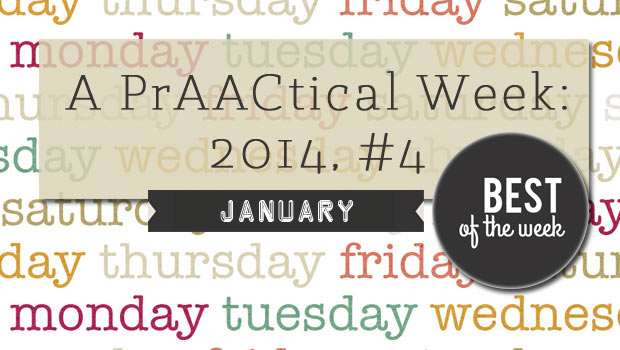
We’re headed to ATIA after another prAACtical week. Here’s what we’ve been up to. Sunday: The PrAACtical Power of Peers Monday: Strategy of the Month: PrAACtical Exercise – Building Fluency with Decontextualized PrAACtice Tuesday: Teach Me Tuesday: Tobii C8 Wednesday: 10 References Supporting AAC Use in Inclusive Settings Thursday: Text-based Aided Language: Making the Language-Literacy Connection for Learners with Autism Friday: Make It PrAACtical – Making Your Own Battery Interrupters (Without Soldering!)
January 14, 2014
by Carole Zangari -
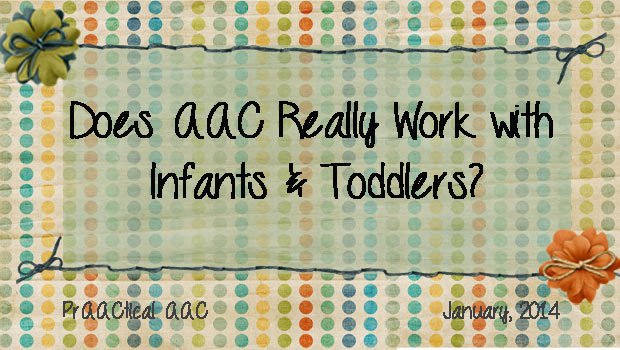
We are occasionally asked how old children have to be before you can begin teaching AAC. Our answer: There is no set minimum age. Nor is there any research evidence that one has to use an oral-language only approach for a set period of time before beginning AAC. Today, we’re delighted to be able to share an article on this topic with you. This article describes a research review in which Branson and Demchak identified a dozen research studies looking specifically at the use of various AAC tools and strategies with infants and toddlers. Data from 190 children up to 36 months of age were examined. Of the 12 studies reviewed, 7 met criteria for having conclusive findings. In 97% of all cases, the children’s communication skills improved. Looking only at the 7 most rigorous studies is even more encouraging: All 135 babies/toddlers demonstrated improved communication skills following AAC intervention.... [Read More...]
December 15, 2013
by Carole Zangari -
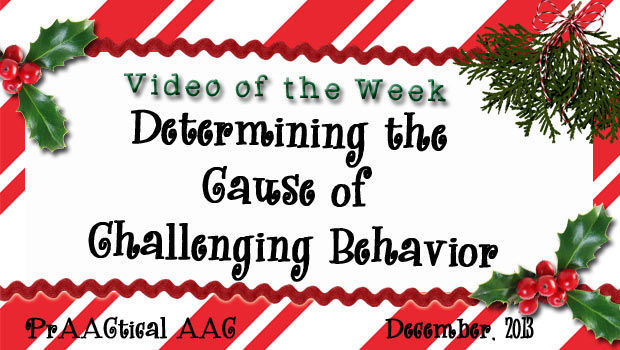
In many cases, SLPs start their careers without the knowledge or experiences that prepare them to support individuals with challenging behavior. This week, we feature a video by Virginia Commonwealth University Autism Center of Excellence entitled Function Matters! How to Determine Why a Student Demonstrates Problem Behavior. In this archived webinar, Dr. Carol Schall provides an overview of Functional Behavior Assessment, and discusses ways in which to use this information to build a behavior support plan. Note: You may be required to register before viewing this archived webinar. Link to video: http://www.vcuautismcenter.org/training/webcasts/webcast.cfm/207
December 10, 2013
by Carole Zangari -
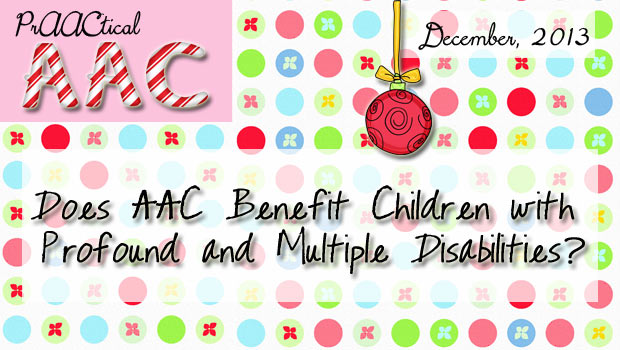
For most SLPs, it is easy to see how AAC can be beneficial to someone with motor difficulties, like cerebral palsy or ALS. To say that AAC strategies and technologies can be life-changing for these individuals is not an understatement. Similarly, the fields of SLP and special education now recognize that visual supports and AAC options are a standard of care for people affected by autism who have little or no functional speech. Not only does AAC provide a means for functional communication, but it also plays facilitative important role in speech and language development. To be sure, there are significant challenges in the implementation of AAC supports and services with these populations, but the practices themselves are now widely recognized for their positive impact on communication, literacy skills, independence, and behavior. But what about individuals with the most significant learning challenges? In this post, we share an article looking... [Read More...]
November 8, 2013
by Robin Parker -
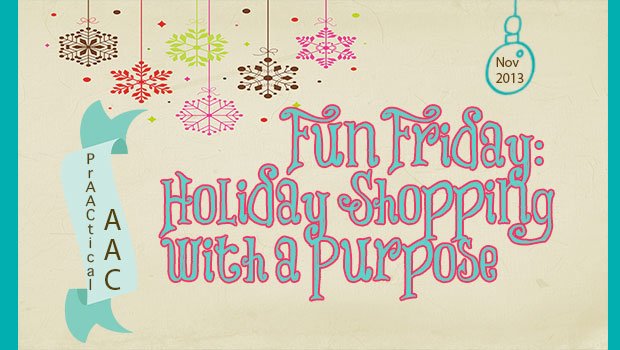
The holidays are prAACtically here and depending upon the holiday traditions you celebrate they may be closer than you realize. Chanukah begins the day before thanksgiving and we never think it is too early to shop for Christmas or any other holiday, so here are some great companies to help you get started. We will update this holiday shopping list a few times throughout this holiday season. Please send any additional companies you feel should be included. Paper Clouds Apparel– Get t-shirts, hats, and totes featuring artwork designed by individuals with special needs. Paper Clouds apparel also hires individuals with special needs to package all of the products. and more. Paper Clouds Apparel was formed to showcase the creative minds and artistic abilities of individuals with special needs while raising funds to provide financial support for special needs schools and organizations. Fifty percent of the net proceeds from the sale of... [Read More...]
November 4, 2013
by Robin Parker -

Strategy of the Month Building Participation Building Participation with Older Learners Classroom Participation Community Participation PrAACtical Thinking Second Annual AAC Awareness Month Celebration! 5 Fun AAC Things to do to Get Ready for Halloween 30 Posts You May Have Missed in September Celebrate AAC Awareness Month with PrAACtical Giveaways Another PrAACtical Celebration How Can we Make ‘Clients’ ‘like’ Using their AAC ? 6 Things to Learn from Talking AAC Communicative Competence in AAC Throwback Thursday Core Word Round Up Celebrating AAC Awareness Month 2013 Halloween Recipes for Cooking AAC Style Fast FAACt- What 24 Cents Will Buy Perception & Presuming Competence 5 Ways to Promote Consistent AAC Use What Went Well How I Do It Implementing AIded Language Input with Alicia Garcia 5 AAC Things I Wish I Had Known with Deanne Shoyer Teach Me Tuesdays Alexicom AAC Proloquo2Go Video of the Week Everyone Communicates- Advocacy & Inclusion Developing Communicative Competence... [Read More...]
October 26, 2013
by Robin Parker -
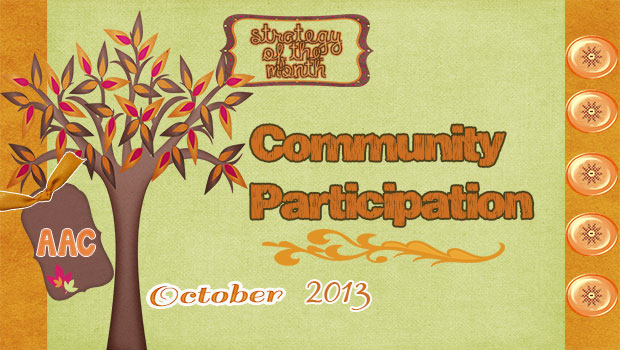
Community participation and communication for AAC users is an integral part of of developing, growing up, and having inclusive opportunities. We often relate community participation to quality of life indicators. Community participation for AAC users begins from the… beginning. Young children can order in restaurants, use picture menus, and have access to many inclusive events. As children grow into adolescents and adults, community participation involves post secondary options, employment, and community living. Perspectives from AAC Users Have communication displays and devices available at ALL times– You need access to a communication system(s) to participate in all situations. Remember to take AAC with you. The sooner the AAC user becomes responsible for taking or telling someone to take the device/displays with them the easier it becomes. For mobile technology systems, there are rugged cases that withstand wind, water, even medical waste (see Lauren Enders Pinterest boards for case and accessory options).... [Read More...]
October 15, 2013
by Robin Parker -
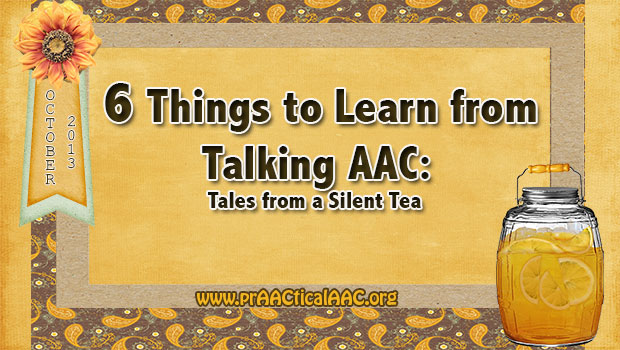
We participated in a silent tea. We used no tech, low tech, and high-tech AAC. For 1 hour. With a group of graduate students, families, and clients. We only communicated with AAC, no natural speech. It was enlightening to say the least. We have done silent teas before, but not recently and as it turns out, a lot was forgotten. Lessons Learned: Communication Takes Longer. Communication takes much longer when using a speech generating device. This is true even when you know the message you are trying to compose, even when you know where the symbols or words are located. We are pretty good at using pause time and waiting expectantly but realized we need to probably wait even longer for messages to be composed. As long as the interaction is continuing, waiting 45 seconds is not too long and if you see someone in... [Read More...]
October 4, 2013
by Robin Parker -
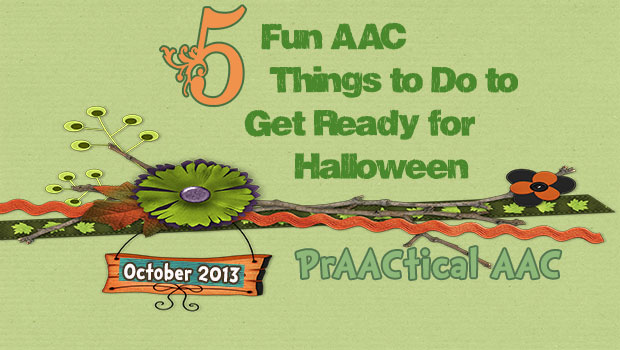
We love to start planning for holidays early. It helps facilitate conversation before, during, & after exciting activities and events. When we begin using core and fringe vocabulary early, frequently, and authentically the learner has the most opportunity for success. Use Schedules: Use a monthly calendar to have a Halloween countdown, Use mini-schedules to make food recipes, spooky science concoctions, or even to plan the trick or treating routes. Use a small talk app like Fat Cat Spooky Chat to prAACtice what you will SAY (October core words) on Halloween. Use a social narrative to prepare everyone for what to expect on and around Halloween. More Halloween social narratives can be found at Autism Community, One Place for Special Needs, Katherine Sanger You Tube, & Kentucky Autism Training Center Prepare a choice board of Halloween costume options and let the learner decide on the costume. PrAACtice a script to be... [Read More...]
September 28, 2013
by Robin Parker -
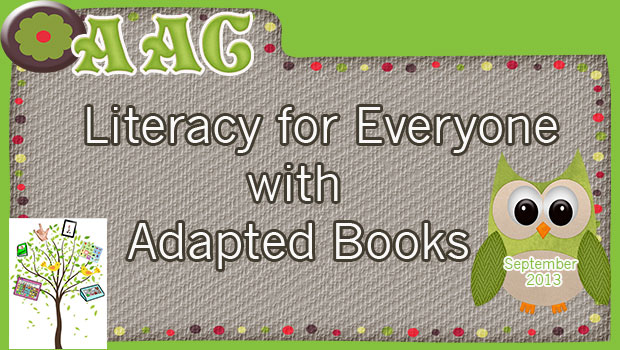
To integrate reading and writing into communication & language learning we need to have lots of books that are easily accessible. Books should be accessible physically as well as through content and interest. This holds true for ALL learners even those that don’t like books but do like…… wheels. We have made literacy accessible for a young girl who only liked elevators, and a boy who only liked balls, and a young adult who liked Barney books but not much else. It holds true for ALL disabilities, and ALL levels of reading and writing. For our final September Literacy Strategy of the Month, we wanted to share the abundance of resources for making adapted books. Because when we have great adapted books, literacy is more accessible. Check out these awesome resources for making your own adapted books and for printing out already created adapted books and lessons. We love early... [Read More...]









